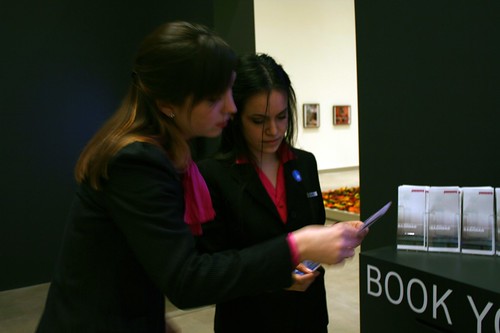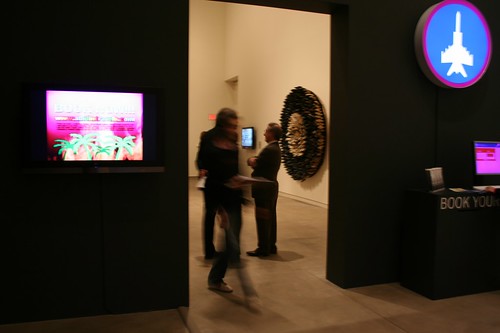 There is one specific image that I have never been able to remove from my mind: an image of a Guatemalan solider pointing a gun at the belly of a young pregnant woman. Ironically, I have no recollection as to the source of that specific image. Part of me wonders if that image even existed, or if it was a confabulation of my youth, created in response to the countless stories of political massacre in Guatemala that my father described to me on a regular basis.The Power of ImageRecently I attended a symposium on Architecture, Art and the Experience of Blackness, where I was greatly moved by the words of Hamza Walker, who serves as the Director of Education and Associate Curator for the Renaissance Society at the University of Chicago.In an effort to outline “blackness” or the “black experience”, Walker alluded to the profound impact of the publication of the casket-side Emmett Till photos in JET magazine.The Till incident began with the brutal beating and murder of an 11yr old boy, whose only crime was whistling at a white woman. In a surprisingly high profile trial the two men accused were almost immediately acquitted by an all white jury. The boy’s grieving mother insisted on an open casket funeral so that the world could see what had happened to her beloved son.Walker said, that the media transmission of these transgressions confirmed the collective understanding shared by African Americans that this treatment was the reality of the judicial system. If they were to ever “compromise the integrity of a white woman” what happened to Till would happen to them.Is exposure to explicit images of human brutality the proper way to insure that these incidents do not repeat themselves?How many times have we seen the same iconographic holocaust pictures?But do we know who is in these images and what is taking place?Has seeing the same images a million times done anything the stop the Iraq war or prevent genocide in Darfur?Perhaps the issue comes down to the dissemination of information to young people. Without providing a proper context for the interpretation and dialogue surrounding these explicit images, the depicted incidents become far removed from our lives, and we become numb to their reality.Why a Coloring Book?Coloring Books, emerged in the United States a part of the movement towards the “democratization of education”. They are commonly utilized in popular education models as, accessible teaching tools for often illiterate audiences.This coloring book provides the platform for the introduction and the critical re-evaluation of social movements the context in which they occurred, and the individuals who have preserved and made a major impacts upon the world.
There is one specific image that I have never been able to remove from my mind: an image of a Guatemalan solider pointing a gun at the belly of a young pregnant woman. Ironically, I have no recollection as to the source of that specific image. Part of me wonders if that image even existed, or if it was a confabulation of my youth, created in response to the countless stories of political massacre in Guatemala that my father described to me on a regular basis.The Power of ImageRecently I attended a symposium on Architecture, Art and the Experience of Blackness, where I was greatly moved by the words of Hamza Walker, who serves as the Director of Education and Associate Curator for the Renaissance Society at the University of Chicago.In an effort to outline “blackness” or the “black experience”, Walker alluded to the profound impact of the publication of the casket-side Emmett Till photos in JET magazine.The Till incident began with the brutal beating and murder of an 11yr old boy, whose only crime was whistling at a white woman. In a surprisingly high profile trial the two men accused were almost immediately acquitted by an all white jury. The boy’s grieving mother insisted on an open casket funeral so that the world could see what had happened to her beloved son.Walker said, that the media transmission of these transgressions confirmed the collective understanding shared by African Americans that this treatment was the reality of the judicial system. If they were to ever “compromise the integrity of a white woman” what happened to Till would happen to them.Is exposure to explicit images of human brutality the proper way to insure that these incidents do not repeat themselves?How many times have we seen the same iconographic holocaust pictures?But do we know who is in these images and what is taking place?Has seeing the same images a million times done anything the stop the Iraq war or prevent genocide in Darfur?Perhaps the issue comes down to the dissemination of information to young people. Without providing a proper context for the interpretation and dialogue surrounding these explicit images, the depicted incidents become far removed from our lives, and we become numb to their reality.Why a Coloring Book?Coloring Books, emerged in the United States a part of the movement towards the “democratization of education”. They are commonly utilized in popular education models as, accessible teaching tools for often illiterate audiences.This coloring book provides the platform for the introduction and the critical re-evaluation of social movements the context in which they occurred, and the individuals who have preserved and made a major impacts upon the world.
abidin travels
 (above)Willie Cole, The Difference between Black and White,2005-6. Shoes, wood, metal, screws, and staples, 85 x 16".
(above)Willie Cole, The Difference between Black and White,2005-6. Shoes, wood, metal, screws, and staples, 85 x 16".
ST. LOUIS, MO - War and disaster have profoundly shaped the opening years of the 21st century. In the United States and abroad, acts of violence and terrorism as well as natural catastrophes have resulted in large-scale destruction and displacement affecting the lives of millions. In February, the Mildred Lane Kemper Art Museum at Washington University in St. Louis will present On the Margins, an exhibition exploring the impact of war and disaster through the work of a diverse range of contemporary artists. Curated by Carmon Colangelo — a nationally known printmaker as well as dean of the university's Sam Fox School of Design & Visual Arts — the exhibition will showcase more than a dozen works, ranging from prints and photographs to video and large-scale installations, by ten artists from around the world. Several installations play against traditional approaches to war memorial. For example, Fallen (2004-ongoing), by the American artist Jane Hammond, comprises a large field of brightly colored leaves, each bearing the name of a soldier killed in Iraq. Similarly elegiac is Metal Jacket (1992/2001), by South Korea's Do-Ho Suh, which consists of 3000 dog tags stitched to the liner of a U.S. military jacket. Abidin Travels: Welcome to Baghdad (2006), an interactive video installation by the Iraqi expatriate Adel Abidin, allows viewers to become virtual tourists amidst the wreckage of his native Baghdad.
In conjunction with the exhibition MFA candidates Carianne Noga, Dan Solberg, Erica Millspaugh and I assumed the role of travel agents assisting museum visitors in arranging their virtual flight Baghdad aboard a B52.

